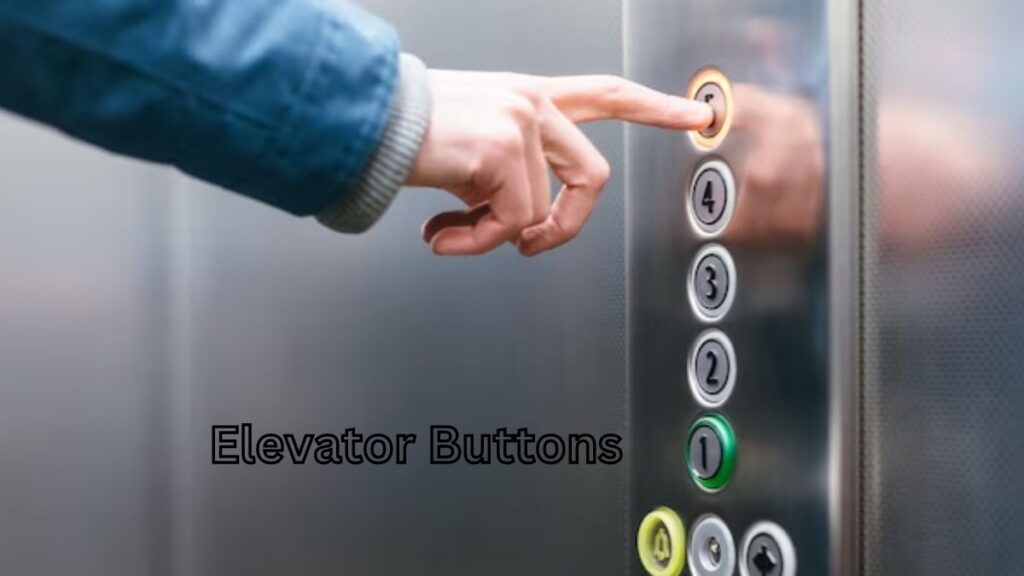Elevator buttons have evolved over time, from simple mechanical switches to more advanced electrical systems. They are crucial for the user experience, with designers focusing on aesthetics, layout, and accessibility. Tactile feedback and accessibility are also important aspects of elevator buttons. Smart elevator technology, such as touch screens, voice recognition, and mobile applications, has transformed elevator systems. Touch screen panels and gesture controls are becoming more common, while voice-activated systems enable users to select floors without lifting a finger. Mobile apps are also integrating with elevator systems, enhancing user control and minimizing physical contact. Challenges in elevator button technology include wear and tear, vandalism, and maintenance. The future of elevator buttons holds exciting possibilities, with further integration with artificial intelligence and haptic technology.
The Evolution of Elevator Buttons
The history of elevator buttons traces back to the late 19th century when the first elevators were introduced. Initially, these buttons were simple mechanical switches that passengers manually pushed to indicate their desired floor. Over the years, as technology advanced, so did the design and functionality of elevator buttons.
Mechanical to Electrical: The Technological Leap
The transition from mechanical to electrical elevator systems marked a significant milestone. With this shift, buttons became more responsive and reliable. Passengers no longer had to exert physical force to trigger the elevator’s movement; instead, a gentle touch on a button would suffice.
User Interface and Design
Elevator buttons are not merely functional; they are also an integral part of the overall user experience. Designers pay careful attention to the aesthetics, layout, and accessibility of these buttons. The arrangement of buttons, the clarity of floor numbers, and the tactility of the buttons themselves contribute to a seamless and user-friendly interface.
Tactile Feedback: Enhancing User Experience
One aspect often underestimated is the importance of tactile feedback in elevator buttons. The sensation of a button depressing under the pressure of a finger provides an assurance to the user that their input has been registered. This tactile feedback is a key element in creating a positive and confident interaction with the elevator’s control panel.
Braille and Accessibility
In the quest for inclusivity, elevator buttons are designed to cater to individuals with visual impairments. Braille markings alongside floor numbers enable those with limited or no vision to navigate and use elevators independently. This commitment to accessibility reflects the societal push towards creating environments that are inclusive for everyone.
Smart Elevator Technology: The Dawn of a New Era
In recent years, the integration of smart technology has transformed the landscape of elevator systems. Traditional buttons are now accompanied by touch screens, voice recognition, and even mobile applications that allow users to summon elevators with a simple tap on their smartphones.
Touch Screens and Gesture Controls
Touch screen panels have become increasingly prevalent in modern elevators. These sleek interfaces replace physical buttons with interactive screens that respond to the touch of a finger. Some systems also incorporate gesture controls, allowing users to select their desired floor with a simple wave of the hand.
Voice-Activated Systems: Elevators Responding to Your Voice
Imagine entering an elevator and simply stating your desired floor without lifting a finger. Voice-activated elevator systems are making this a reality. These advanced systems use voice recognition technology to understand and execute passengers’ commands, adding a touch of futuristic convenience to our daily vertical travels.
Integration with Mobile Apps
In an era dominated by smartphones, elevator systems are keeping pace with the digital age. Mobile applications allow users to call elevators, select floors, and even customize settings, all from the convenience of their phones. This integration not only enhances user control but also contributes to a more hygienic experience by minimizing physical contact with shared surfaces.
Challenges and Innovations in Elevator Button Technology
Despite the advancements, elevator buttons face challenges such as wear and tear, vandalism, and the need for regular maintenance. Innovations in material science and engineering are addressing these issues, with the development of more durable and resilient button technologies. Additionally, antimicrobial coatings are being explored to enhance the hygiene of frequently touched surfaces.
Energy Efficiency and Sustainability
As sustainability becomes a focal point in design and technology, elevator systems are not exempt from this trend. Efforts are being made to optimize energy consumption, employing technologies such as regenerative drives and energy-efficient lighting in the control panels. These initiatives contribute not only to energy savings but also to a more environmentally conscious approach to vertical transportation.
The Future of Elevator Buttons: Beyond Conventional Paradigms
Looking ahead, the future of elevator buttons holds exciting possibilities. From further integration with artificial intelligence to the exploration of haptic technology that simulates the sense of touch, the next generation of elevator systems is poised to redefine the way we interact with vertical transportation.
Conclusion
Elevator buttons, though seemingly mundane, embody the marriage of form and function in our daily lives. From the humble mechanical switches of the past to the smart, touch-sensitive interfaces of today, these buttons have evolved alongside technology, providing us with a seamless and efficient means of navigating vertical spaces. As we continue to innovate and push the boundaries of design, one can only wonder what new heights elevator buttons will reach in the years to come.







